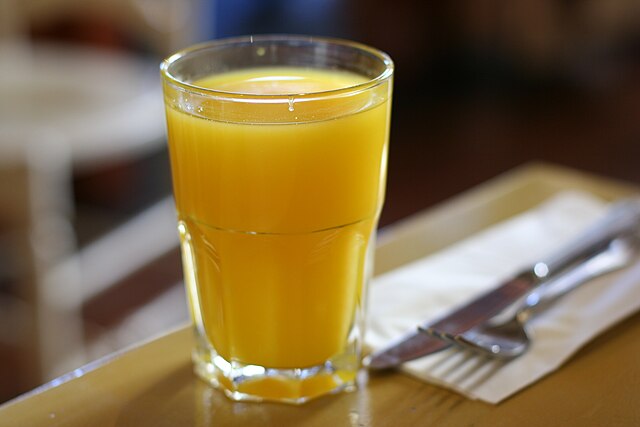Tariff exemptions have sent prices of orange juice crumbling in markets amid new fruit sugar content regulations in the United States.
In cash markets, traders on August 6, 2025 had quotations maximizing at $2.3595 a pound, a US¢0.65 daily loss.
On the 5th, futures had recorded a slim daily contraction by -0.27% to $2.36 a pound and then $2.34 on the 6th.
The unit value loss dogged the removal of select tariffs for a major juice import source by the Trump administration.
This import source is Brazil, which on July 31, 2025 got duty withheld for 43.6% of its U.S.-bound exports, including orange juice. After the announcement, daily ICE futures for the consumer beverage shed 8.8%, to trade at $2.601 a pound.
As a traditional summer breakfast staple, pasteurized orange juice is a popular beverage stateside due to its fabled immunity attributes.
It is also a cash cow for Brazil, which ships 40% of its international market volumes to the United States.
The South American nation competes with Egypt, South Africa and Spain in the supply of orange-related products.
Fruit Sugar Content Downsizing
A neutral pathway has also emerged after the Food and Drug Administration (FDA) stated intention to reduce sugary orange levels in juice products.
For producers and traders, this move could help stabilize prices for it could lure back health-conscious consumers. Customers have for sometime been abandoning sugary orange juice, pushing prices up weeks before the tariff exemption news.
Interestingly, Florida’s orange crop has been naturally losing its sucrose levels in recent years due to a bacteria that cuts yields.
Some producers in 2022 even aproached the FDA to push down sugar minimums in pasteurized orange juice.
For consumers, the reduction in sweet citrus content means healthier juice and might help revamp demand for the product.
The timing of demand revival and orange juice retail stabilization of course remains uncertain until the tariff storm ends the ongoing market distortions. A look at the following statistics shows that orange juice prices luckily never stay volatile for long.
United States’ Orange Juice Prices, Production and Consumption Statistics
Orange juice and concentrate prices in the United States remained relatively stable in the four decades between 1980 and 2018. While in January 1980 the rate for frozen orange juice concentrate was $1.847 per pound (lb), in September 2018 it hit $2.478/lb. This means a relative difference of over 600 cents in the course of four decades. There was some volatility bouts in this period, too: a late 1980 low of 1.122/lb and a summer 2017 high of $2.868/lb. Driving price changes in the U.S. is huge utilization, per the following section.
At 486,000 tonnes as of the 2023-24 market year, the United States leads the world in orange juice consumption volume. The European Union (EU) had earlier led consumption in 2019-20 (589,000 tonnes), 2020-21 (585,000 tonnes) and 2021-22 (541,000 tonnes).
Consumption levels in the U.S. remain high, despite domestic production being low. 2024-25 production estimates by the USDA for 65º Brix orange juice were at 80,000 tonnes, down from 111,000 tonnes in 2023-24. Still, this output is only third worldwide to Brazil’s 1 million tonnes and Mexico’s 187,000 tonnes (2024-25 estimates).
To satiate the big thirst, the United States imports 396,000 tonnes annually (2023-24), the second highest volume after the EU’s. Brazil, the top global exporter of orange juice, allocates 40% of its shipments to the United States.
How did American orange concentrate prices perform in mid-2025?
Although they rose slightly between May and June 2025, orange concentrate juice prices remained mainly stable. According to the Federal Reserve Bank, St. Louis, rates in May averaged $4.429 per 473.2 ml while in June they reached $4.493.
